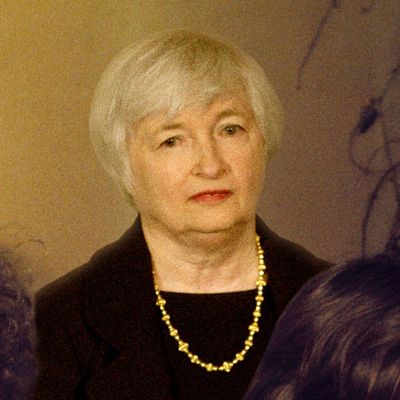
This morning, the Labor Department released the worst jobs report of the year. Hiring was slow. Wages were stagnant. The unemployment rate stayed stable, but only because people were dropping out of the labor force. It was bad enough that at least one prominent economist has ventured the guess that this might be the beginning of a new recession.
Now all eyes turn to the Federal Reserve, which has clearly indicated its desire to raise interest rates before New Year’s. “It will likely be appropriate to raise the target range of the federal-funds rate sometime later this year and to continue boosting short-term rates at a gradual pace thereafter,” Janet Yellen, the Fed chair, said last month, sounding, in The Wall Street Journal’s estimation, “like a prosecutor giving a closing argument.”
If the central bank goes ahead and does so — and the markets do not think that is going to happen, given the way they rebounded today — it is now clear it will be doing so against a moderate to strong headwind. And thus the Fed might join the list of central banks, as the Washington Post’s Matt O’Brien noted, that have tried to raise rates in the postcrisis period, only to ratchet them back down again. That is what Canada did. It is what Sweden did, and Israel, and the European Central Bank. You can check out anytime you like, it seems, when it comes to ZIRP. But you can never leave.
Imagine it: The Fed raises rates at the end of 2015, as the global swoon is really starting to take hold in the United States. Negative headlines plaster the newspapers, and households and businesses begin to delay big purchases, just in case. Job growth drops lower, or even to scratch. The markets revolt, with volatility climbing. Early in 2016, the Fed holds. It holds again. Then it drops back to zero, to account for the slowdown hitting our shores.
What’s worse is that the Fed would have nowhere to go below zero if it really wanted to try to offset the recessionary forces in the economy. It has dismissed the idea of negative interest rates. It could restart a big asset-purchase program, but there just is not a lot of room for rates to move, and there have long been concerns about diminishing returns. No, at that point, all eyes would fall to Congress — broken, crazy, divided Congress, which would by then be deeply absorbed in the goat rodeo that is the presidential election — to help the economy move along.
At what point could the Fed finally start to lift rates back to normal levels? The really scary thing is that nobody really knows. Proponents of the so-called secular stagnation theory argue that rich-country economies might be facing a prolonged period of sluggish growth and dampened wages — one of the ways out of which would be big, big stimulus spending. One way or another, then, it might be on Congress to break Yellen out of her Hotel California.





























